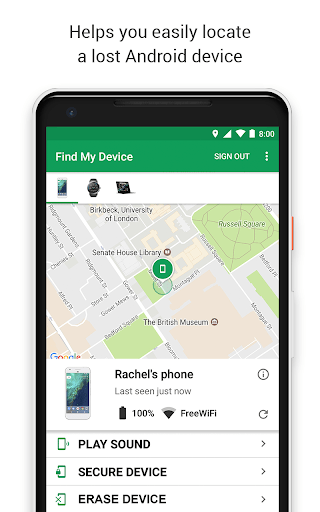Losing your phone is a gut-wrenching experience, but thankfully, technology has our backs. Find My Device (or its equivalent on other platforms) is a lifesaver, offering a surprisingly powerful suite of tools to locate, secure, and even remotely wipe your lost or stolen smartphone or tablet. This post will delve into the features of Find My Device, offering tips and tricks to maximize its usefulness and ensuring you’re prepared should your device ever go missing.
Google Found A New Icon For Find My Device
In a recent blog post titled “Find My Device,” Google announced a refreshed look for the app’s icon. The updated icon, subtly redesigned, aims to provide a more modern and intuitive visual representation of the Find My Device service. While Google hasn’t explicitly detailed the changes, the new icon likely reflects the company’s ongoing efforts to unify its visual branding across its various platforms and services. The blog post focuses on the utility and features of Find My Device, highlighting the updated icon as a small but significant part of the overall improvement and user experience enhancement.

Photo credit: static1.anpoimages.com
www.androidpolice.com
Find My Device: What It Is And How To Use It To Find Your Phone
Find My Device is a Google service that lets you locate, lock, or erase your Android phone or tablet remotely. It’s a lifesaver if you’ve misplaced your device or if it’s been stolen. To use it, first ensure Find My Device is enabled in your phone’s settings (usually under “Security” or “Google”). Then, if you lose your phone, simply go to google.com/android/find on another device (like a computer or another phone) and sign in with the same Google account linked to your lost phone. The map will show your phone’s last known location. From there, you can ring your phone (even if it’s on silent), lock it with a new password, or erase all data to protect your personal information.

Photo credit: www.androidcentral.com
www.androidcentral.com
Find My Device Apk For Android Download
Looking to download the Find My Device app for Android? While it’s not a separate APK you download directly, the functionality is built into most modern Android devices. Find My Device is integrated into Google Play Services, meaning it’s likely already installed and ready to use. If you’re having trouble locating it, simply search for “Find My Device” in your app drawer or Google Play Store. Ensuring your device is signed into your Google account and location services are enabled is crucial for the app to function correctly. If you’re using an older Android device and still can’t find it, you might need to update your Google Play Services.
apkpure.com
Download Google Find My Device On Pc & Mac With Appkiwi Apk Downloader
Looking to find your lost Android device? Google’s Find My Device is your best bet, and accessing it on your PC or Mac is easy. While there’s no official desktop app, you can use a reliable third-party APK downloader like AppKiwi to get the Android app onto an emulator like Bluestacks or NoxPlayer. This allows you to use Find My Device’s full functionality – locating your phone, making it ring, locking it, or even erasing its data – all from the comfort of your computer. Remember to download APKs only from trusted sources like AppKiwi to avoid malware. This method provides a convenient alternative for those who prefer managing their device remotely from a larger screen.
app.kiwi
How To Enable Find My Device On Android
Enabling Find My Device on your Android is crucial for locating your phone if it’s lost or stolen. First, ensure you’re signed into a Google account on your device. Then, open the Google Play Store and search for “Find My Device.” Download and install the app (if it’s not already present – it usually comes pre-installed). Once installed, open the app. You may be prompted to grant certain permissions; accept these to allow the app to function correctly. That’s it! Your device is now registered and ready to be located remotely, provided location services are enabled and your phone has an active internet connection.

Photo credit: www.addictivetips.com
www.addictivetips.com



